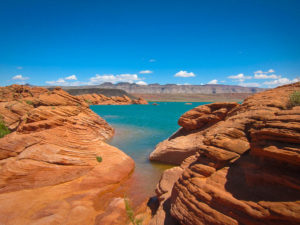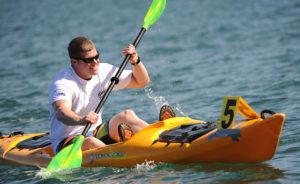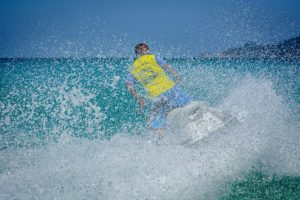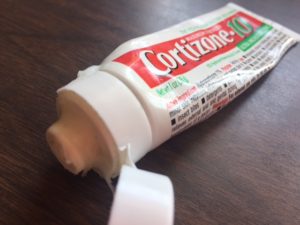When it comes to enjoying the water at Sand Hollow in Southern Utah, one question looms at the forefront of people’s minds: What about the issue of Sand Hollow swimmers itch? What is it? How likely am I to get it? How can it be prevented? Why is Sand Hollow swimmers itch in Sand Hollow anyway?

What is Sand Hollow swimmers itch?
According to Medicinenet.com, swimmer’s itch in general is “a skin rash caused by an allergic reaction to certain parasites of birds and mammals.” In the case of Sand Hollow swimmers itch, these parasites, microscopic in size, are release from infected snails that swim in the shallow water of the lake. So people using the water for swimming and wading may be susceptible to the rash.
The Sand Hollow swimmers itch is also called cercarial dermatitis. Symptoms may present themselves within minutes of swimming in the contaminated water. Other times, the symptoms will lie dormant for a few days before rearing their itchy, ugly heads.
Symptoms include tingling, burning or itching of the skin. Within 12 hours there may be the appearance of small reddish pimples. The itching itself may last up to a week or more, but will eventually run its course.

It is also noteworthy that because swimmer’s itch is by caused an allergic reaction to the infection, it’s possible that the more frequently you are exposed to the contaminated water, the more severe the symptoms may be. And, the more often you swim or wade in the contaminated water, the more likely you are to show symptoms of Sand Hollow swimmers itch.
Can Sand Hollow swimmers itch be prevented?
According to an article in The Spectrum quoting Laura Melling, the Sand Hollow Complex manager, approximately 7 percent of people get swimmer’s itch. Of that 7 percent, the majority only gets it once. So while it’s something Sand Hollow officials warn visitors about, it is not, as Melling puts it, “some terrible disease.”
Dave Heaton, Southern Utah Public Health Department spokesperson, agrees.
“It’s not going to cause disease or anything life threatening,” Heaton says.

But can it be prevented? According to information provided by the StateParks.utah.gov, the best way to avoid contracting swimmers itch is to avoid swimming in areas where it is known to be a problem. Some areas that are more likely to have active Sand Hollow swimmers itch include marshy areas. These areas often contain more snails, so the odds are higher that the cercarial dermatitis will take place.

For those wishing to roll the dice in terms of whether or not they’ll be among the 7 percent scratching their skin after a day of swimming at Sand Hollow, there are a few things to bear in mind. For example, towel dry off immediately after exiting the water. This is because the microscopic parasites located in the water will need somewhere to go as the water starts to evaporate. The only place to go, is your skin.
The other suggestion is to swim in deeper water, away from the shore. Deep water areas are less likely to contain the parasites.
Why is swimmer’s itch at Sand Hollow?
Although the presence of swimmer’s itch parasites at other bodies of water in Southern Utah have been reported, it seems Sand Hollow has the most cases. The parasites just seem to thrive in the water’s conditions.
Once again, Melling is reported to say in an article by The Spectrum that Gunlock’s water has a lot of minerals in it, while the water at Quail Creek is more acidic. Neither of those conditions are as conducive for the parasite to thrive.
How can I treat Sand Hollow swimmers itch?
If you are unlucky enough to be among the 7 percent — first of all, don’t head to Vegas. Secondly, don’t worry. There is a way to treat Sand Hollow swimmer’s itch.
According to the Centers for Disease Control (CDC), the rash can be treated with the following for some relief:
* Corticosteroid cream

* Apply a cool compress
* Bathe in Epsom salts or baking soda
* Soak the affected area in colloidal oatmeal baths
* Stir baking soda into water until it creates a paste and apply the paste to the rash
Check out the latest homes for sale in Washington City, located near several recreational bodies of water. Learn more here.
